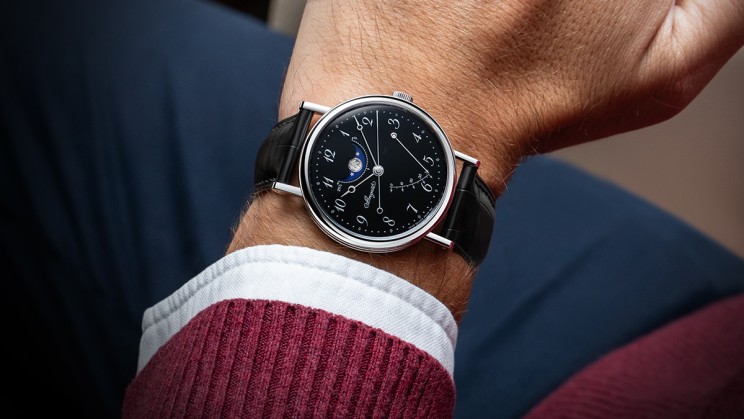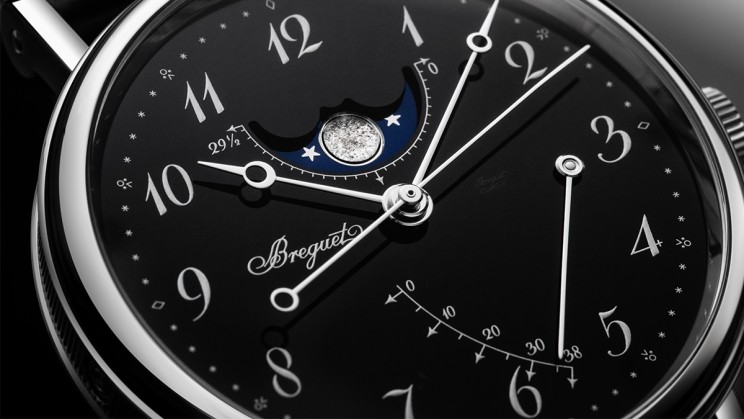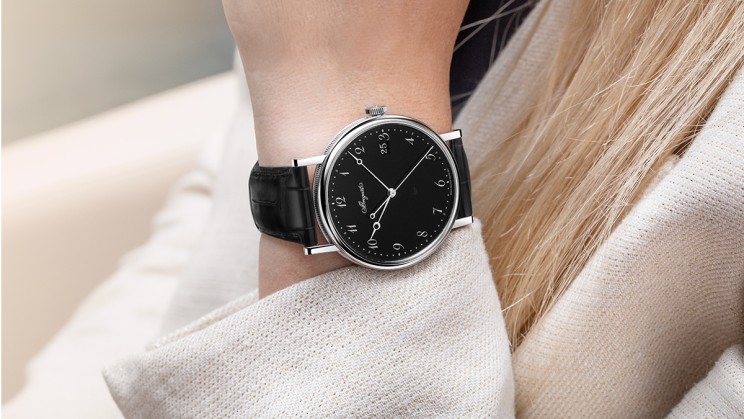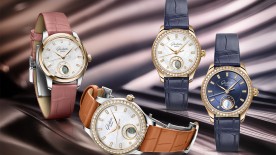Breguet introduces platinum to its Classique line with the references 5177 (hours, minutes, and seconds) and the reference 7787 (with a moon phase and power reserve indicator). This is the first time that timepieces in Breguet’s Classique collection have been crafted in this noble material and to make it shine even more, Breguet has paired them with black “Grand Feu” enamel dials.
Platinum has a naturally bright white colour that is sometimes mistaken for white gold, but if you put the two metals side-by-side, white gold has a slightly warmer, greyish tint to it. If in doubt, especially when it comes to watches, you just need to pick them up and the platinum one will be noticeably heavier. Platinum became popular in the late 1800s with royalty adorning themselves with platinum jewellery. It wasn’t until 1912 that white gold was invented in Pforzheim, Germany as a substitute for platinum due to the overwhelming demand.

Breguet Design
Abraham-Louis Breguet (1747-1823) is mostly famous for his groundbreaking innovations, but he also had a very strong sense of design. His watches were always simple and highly legible, regardless of the complexity of the movement beneath. This was a time when ornamental timepieces were extremely popular, but for Breguet, he preferred the simplicity of white enamel or delicate guilloché patterns that wouldn’t distract from the watch’s indications. He also reimagined the hands and numerals and his designs still carry his name today with the apple-shaped Breguet hands and curved Breguet Arabic numerals.

Black "Grand Feu" Enamel
For these two new references 5177 and 7787, Breguet has chosen a black enamel dial to accompany the Breguet hands and numerals. This “Grand Feu” enamel process starts with enamel powder, made of different minerals, which is mixed with a binder and delicately applied to the dial’s base. It is then vitrified in a kiln at a temperature between 800 and 1,200 degrees Centigrade. Several coats of enamel and numerous firings are required for the material and colour to fuse together. Of all the types of enamel, black enamel is one of the most difficult to produce as any imperfection is immediately obvious to the eye.
References 5177 and 7787
These two references combine the elegance of platinum with the depth of black enamel to create two stunning new models in the Classique line. They are powered by the tried-and-tested Calibre 777Q for the reference 5177 and the Calibre 591 DRL for the 7787 model. Additional design codes include slim bezels, knurled crowns, slender lugs, rhodium-plated hollow moon-tip hands, and discrete minute markers made of powdered silver.

Like the historic Breguet timepieces signed by Abraham-Louis Breguet himself, these two new models feature secret signatures on the dial. These were added as a guarantee of the authenticity of the timepieces (fakes were also a problem back in the 19th century)! Today, only a handful of watchmakers can make black enamel dials at this level, so there is very little risk, but finding the secret signatures is still easier said than done!







